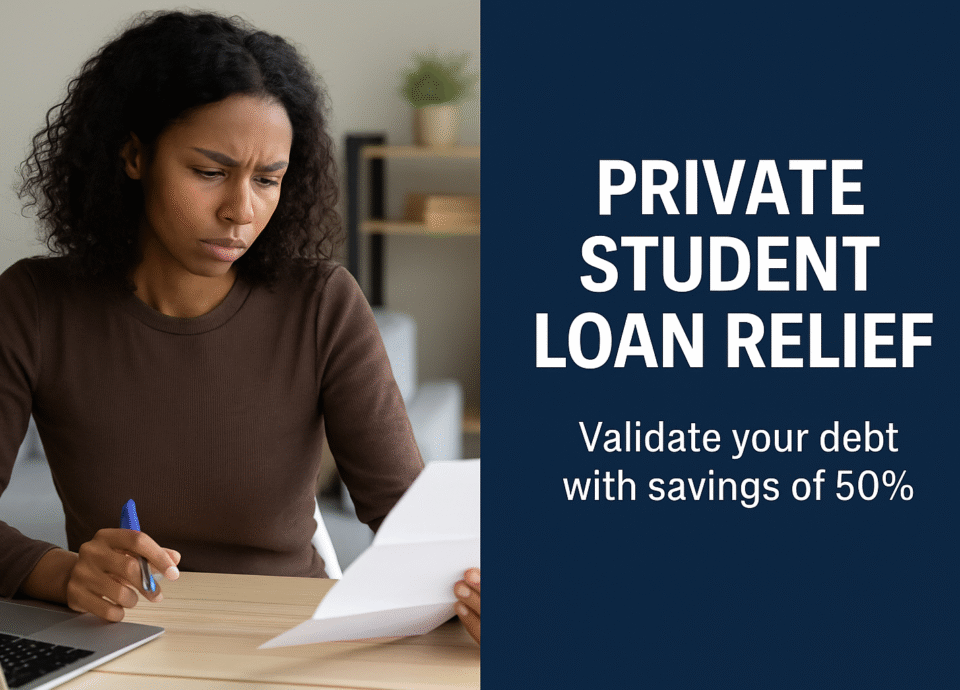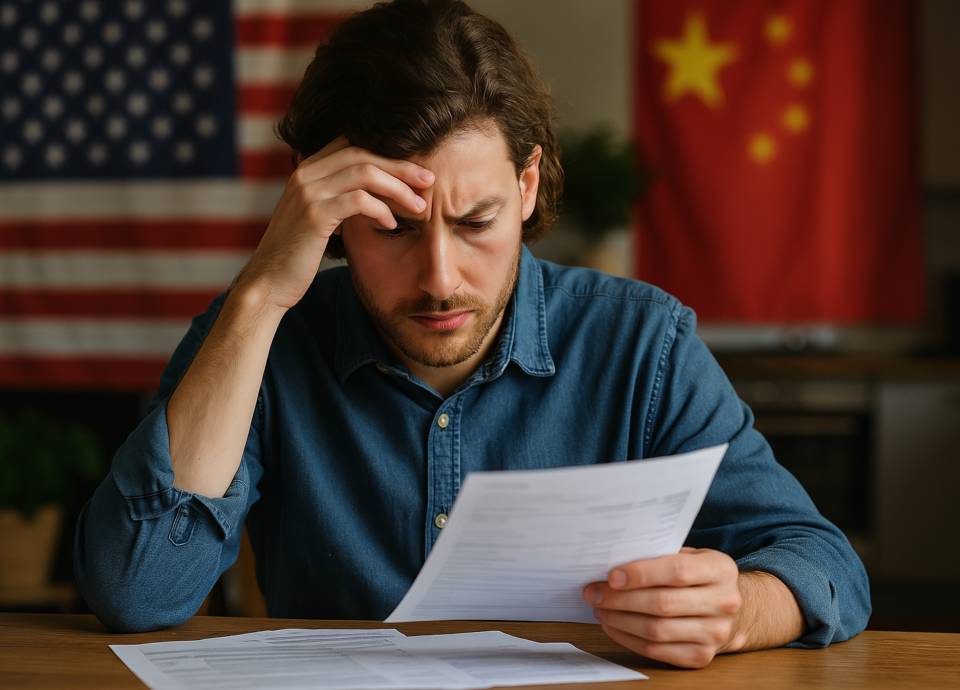In April 2025, the White House announced a historic increase in tariffs: imports from China would now be taxed at 104%. At first glance, this global trade conflict might seem unrelated to your student loans. However, the economic ripple effects—rising inflation, higher living costs, and increased interest rates—directly impact the repayment capacity of millions of Americans holding private student loans. In this article, we’ll explore how these factors connect and what you can do to safeguard your financial future, including options for private student loan relief offered by Private Student Relief.
The U.S.–China Trade War and the 104% Tariffs
On April 9, 2025, President Donald Trump fulfilled a prior threat by imposing a 104% tariff on Chinese imports. This escalation in the trade war places severe pressure on global economic stability. China retaliated with a 34% counter-tariff on U.S. products and allowed its currency to devalue for competitive advantage.
Experts warn that these actions will raise consumer prices and disrupt supply chains. Tariffs function like a tax on consumers: businesses typically pass the added cost on to buyers. As a result, Americans will feel this policy in their wallets through higher inflation, slower economic growth, and rising interest rates.
The Economic Chain Reaction at Home
Inflation and Higher Living Costs
When imported goods become more expensive, everyday items—electronics, clothing, even medical supplies—rise in price. A 104% tariff means that a $100 product could now cost $204. Economists estimate that U.S. households might pay an extra $2,100 annually due to these tariffs. This inflation eats into your budget, leaving less money to make monthly private student loan payments.
Rising Interest Rates
In response to inflation, the Federal Reserve often raises interest rates to cool the economy. This leads to higher rates on variable-rate private student loans, increasing your monthly payments and total interest owed. Even fixed-rate borrowers may find refinancing options more expensive, eliminating a key method of reducing loan costs.
The Direct Impact on Private Student Loan Borrowers
Let’s connect the dots: How exactly do the 104% tariffs hurt private student loan borrowers?
- Reduced ability to repay: With higher everyday expenses, borrowers have fewer discretionary funds to allocate toward their loans.
- More expensive debt: Interest rates go up, especially for variable-rate loans.
- Limited federal relief: Private loans do not qualify for income-driven repayment or forgiveness programs.
- Worsening job market: A slowing economy may stall wage growth or lead to layoffs, making loan repayment even harder.
These pressures combine to create a perfect storm for borrowers. Already, in 2020, over 11% of student loan borrowers had missed at least one payment. The current economic environment is likely to increase that number.
Who Is Most at Risk?
Young Professionals and Recent Graduates
Roughly 34% of adults under 30 hold student debt. Many are early in their careers with modest salaries and minimal savings. Inflation disproportionately affects them.
High-Debt Degree Holders
Graduates from private or for-profit universities often leave school with substantial private debt. These borrowers have fewer financial resources and often face higher default rates.
Professionals with Costly Graduate Degrees
Even high-income earners like physicians and dentists can struggle. For example, average medical school debt exceeds $212,000, often financed through private loans. During residency or early in their careers, their income does not match their debt burden. Rising inflation and interest rates only worsen the situation.
Lower-Income Families and Minorities
Women, particularly women of color, and racial minorities often carry higher student debt relative to income. Without generational wealth or financial support, inflation and interest hikes affect them severely.
What Can Borrowers Do? Relief Options with Private Student Relief
While federal forgiveness programs don’t apply to private loans, borrowers are not powerless. Several strategies can offer relief:
1. Refinancing
This involves replacing your current loan with a new one at better terms. In today’s high-rate environment, this may be difficult, but if your credit score is strong, refinancing could reduce monthly payments.
2. Negotiating With Lenders
Contact your lender and request hardship accommodations. Some offer reduced payment plans or temporary deferments. Provide documentation to support your case.
3. Debt Validation
This is where Private Student Relief makes a difference. Debt validation involves requesting your lender to prove that your loan is legitimate and the amount accurate. Mistakes in calculations, lost documentation, or illegal terms may surface—especially if the loan was sold to a third party.
With over 9 years of experience, Private Student Relief specializes in identifying errors and helping borrowers challenge invalid debts. In many cases, this process has led to:
- Canceled or reduced balances
- Elimination of unlawful collection efforts
- Negotiated lower payments or settlements
4. Personalized Financial Strategy
The team at Private Student Relief offers one-on-one consultation. They assess your case and recommend solutions tailored to your goals—whether that means fighting an unjust debt, negotiating a lump-sum payoff, or restructuring payments over time.
FAQs
How do 104% tariffs on China affect student loan borrowers in the U.S.?
They contribute to inflation, raising everyday expenses and forcing borrowers to stretch their budgets thinner. Additionally, they indirectly lead to higher interest rates on loans.
Who is most affected?
Young adults aged 25–35 with large private student loans, graduates of private or for-profit schools, residents or professionals with high educational debt, and low-to-middle-income families.
What stats support this analysis?
Tariffs may cost U.S. households an extra $2,100/year. More than 43 million people have student debt in the U.S., and private student loans total over $133 billion. Inflation and rate hikes are well-documented across 2022–2025.
Do private student loans qualify for federal relief?
No. Private loans are excluded from programs like PSLF and income-driven repayment.
What is debt validation?
A legal process where borrowers demand proof of the loan’s validity. If a lender fails to comply, collection efforts may be stopped. Private Student Relief guides borrowers through this process.
Conclusion: Take Control of Your Financial Future
In an unpredictable economy, one thing is certain: waiting will not solve your debt problem. You need proactive steps and expert support. Whether you’re struggling to keep up with payments or fear the next rate hike, Private Student Relief can help.
With over 9 years of experience, we offer specialized services in private student loan relief, including debt validation, negotiation, and tailored financial plans. Our mission is simple: help you regain control of your finances and your future.
Don’t let rising costs and interest rates bury you. Contact Private Student Relief today and take the first step toward freedom from private student loan debt.


